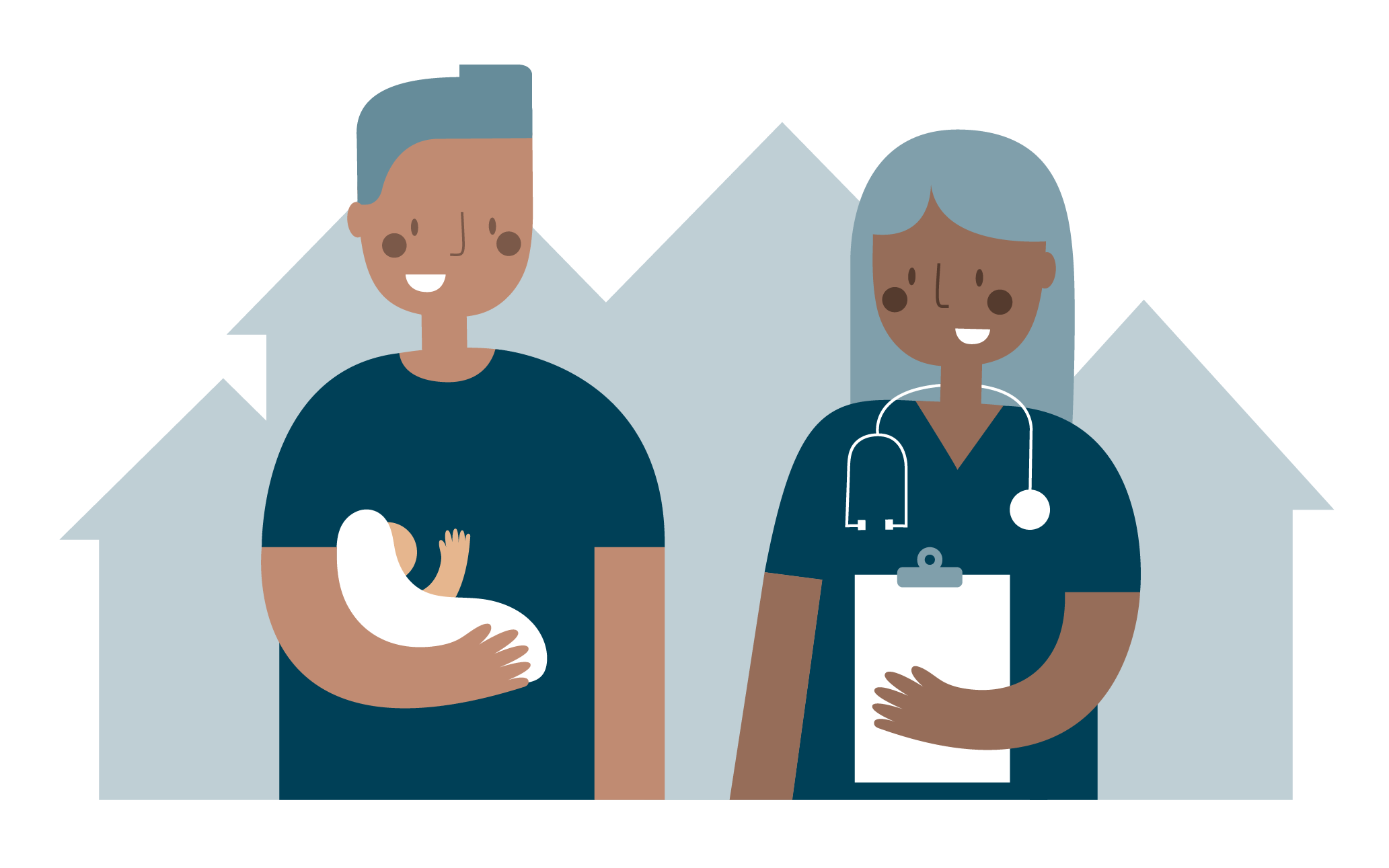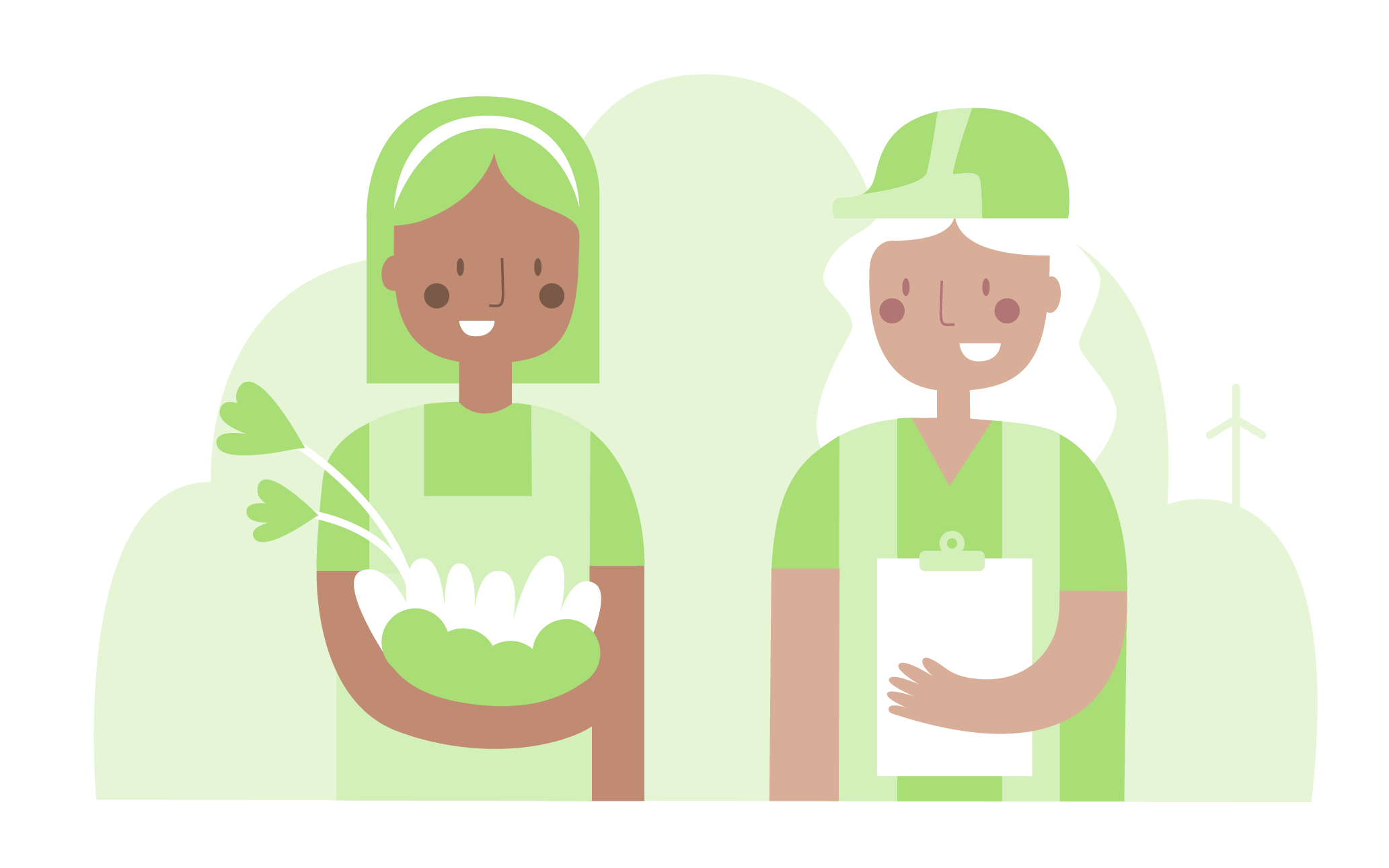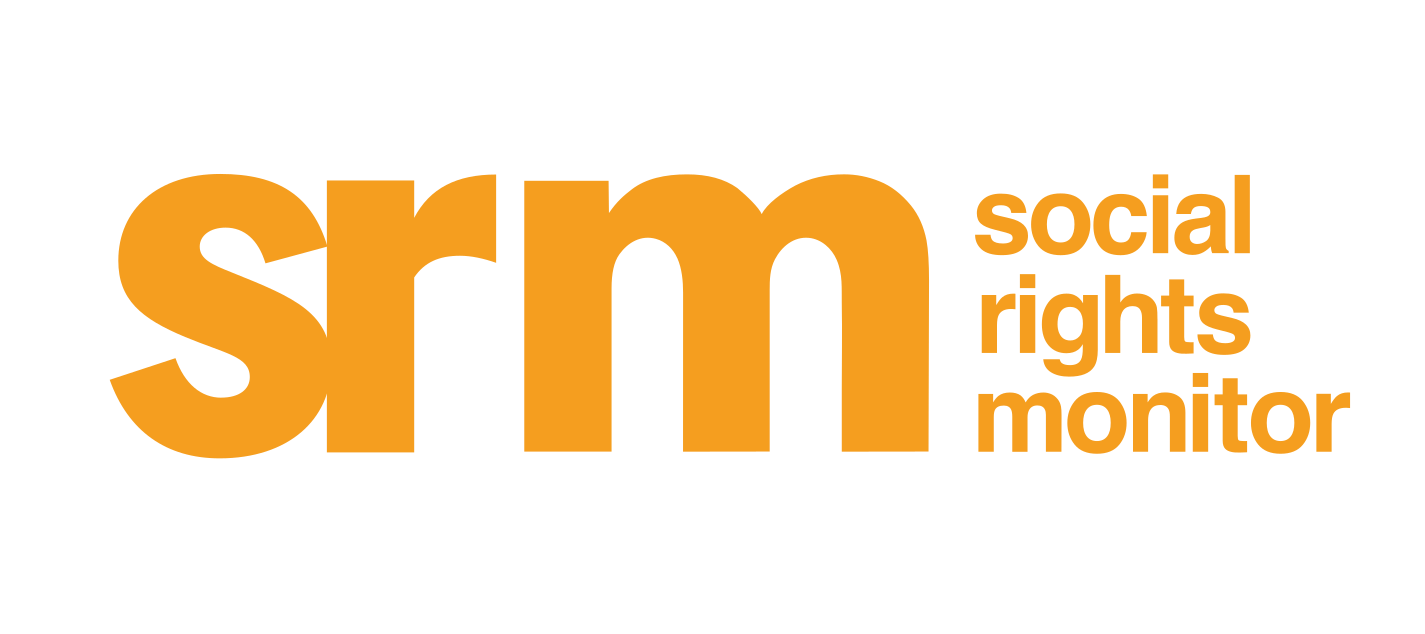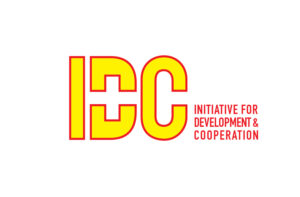Serbia
Score: 46
Social Rights Monitor Overview
The National Strategy Group (NSG), led by the Initiative for Development and Cooperation (IDC), was highly critical of the developments in Serbia during the reporting period. In areas such as labour law and healthcare, Serbian legislation is still not compliant with the European Union’s acquis, despite the government continuing to state that EU membership remains a priority. The NSG also denounced a total lack of action on the part of Serbian authorities regarding problems such as homelessness, the integration of migrants and the employment of Roma, leaving the problems to be dealt with solely by CSOs. More worrying, the NSG noted that the Serbian government is actively working to promote precarious forms of employment and contracts that pay below the minimum wage, such as the Dual Education system. Serbia remains in contravention of several ILO conventions that guarantee rights to workers in atypical employment relationships. Regarding the Just Transition, the NSG sharply criticised the Serbian government and state-owned power company EPS for not taking any action to reduce the country’s dependency on coal power, which currently generates 70% of the country’s electricity. The NSG reported an increasingly difficult operating environment for CSOs, who face intimidation from authorities and private businesses.

Score: 47
Equal Opportunities and Access to the Labour Market
Gender equality
Serbia fell four places on the World Economic Forum’s Global Gender Gap index in 2022, from 19th to 23rd.[1] This decline seems to have been caused by the lack of progress in economic participation and opportunities for women. Data from the Business Registers Agency shows that women account for only a quarter of company managers and merely a third of entrepreneurs.[2] Moreover, according to a report by the Serbian Equality Commissioner, discrimination against women in the workplace has increased. This mostly takes the form of inquiring about female applicants’ marital or family status and the refusal to hire women on the assumption that they will not be able to balance work and family life.[3] Serbia has maintained a better position in terms of female participation in politics: Its share of women members of parliament (36.4%) is higher than both the EU (31%) and global (26.4%) averages.[4] The NSG noted that legislation such as the Gender Equality Act of 2021 and the adoption of the 2021-2030 Gender Equality Strategy have helped promote gender equality in politics.
However, violence against women in Serbia remains a problem, especially femicide. NGOs Femplatz and the Autonomous Women’s Centre have raised concerns over the alarmingly high number of femicides, of which there were 22 in 2022. Dealing with this problem is made more difficult by the lack of a comprehensive mechanism for collecting data and monitoring femicides. Another barrier to progress is the downplaying of the issue by elements of the media, some of which have given space to perpetrators. An example is the interview with a serial rapist published in September 2022 by the tabloid Informer.[5] Finally, femicide is defined quite narrowly in Serbia, as killings resulting from domestic violence, and it does not include the murders of lesbian women, refugee women, and women in prostitution.
| Good practice: It is my business
This awareness-raising campaign aims to provide residents of apartment blocks with instructions on what to do if they witness domestic violence. Building managers in Belgrade, Niš and Novi Sad collaborated with the UNDP to raise residents’ awareness of domestic or partner-related violence. Neighbours are particularly well placed to raise the alarm over possible domestic violence, as they frequently become aware of the problem even before close friends or family. The participating building managers displayed posters detailing signs of violence against women, how to report it, and ways for neighbours to support victims and their families. So far, tenants in 2,700 buildings in 5 cities in Serbia have received training. The programme is supported by UNDP, UNICEF, UN Women, UNFPA, and the Serbian and Swedish governments.[6] |
Inclusion of refugees and asylum seekers
Refugees and asylum seekers generally struggle to access services and social protection such as housing, education and healthcare. In addition, they face barriers to employment opportunities. The lengthy and opaque asylum procedure, which has a large backlog of cases, is the biggest hurdle to asylum seekers’ and refugees’ social rights in Serbia. The Law on Employment of Foreigners stipulates that refugees can apply for a work permit, which is required for legal employment, as soon as they are afforded refugee status. But asylum seekers may only apply nine months after filing their claim for international protection, thus making it harder for them to participate in the labour market.[7] As the first-instance asylum procedure often lasts more than a year, most asylum seekers in Serbia are forced to spend a prolonged period without access to stable and legal employment, as well as other social rights such as unemployment insurance. Moreover, the application process for a work permit is itself a complicated and costly process. Applicants must pay almost 15,000 RSD (Serbian dinars – roughly €125), although this can be waived in specific circumstances.[8] Moreover, the entire process takes place in Serbian, with no official support for people unfamiliar with the language. Applicants must therefore rely on friends or CSO representatives to guide them through the process. Once they are issued with a work permit, refugees and asylum seekers generally find employment quickly because of Serbia’s labour shortages, despite language barriers. Most of this employment is concentrated in the HORECA (hotel, restaurant and café) industry and other sectors where a comprehensive knowledge of Serbian is not needed. Some multinationals operating in Serbia, such as IKEA and Hilton, have also been extremely open to hiring refugees and asylum seekers.[9]
Asylum seekers and refugees also face significant societal discrimination and xenophobia in Serbia. This makes it difficult for them to rent private housing, find employment and make connections in the wider community, which often negatively affects their wellbeing and mental health and hinders their integration. Although the state has made efforts to improve access to healthcare and education, programmes focussed on language learning, vocational training, cultural orientation and psychosocial support have been operated entirely by CSOs.[10]
Inclusion of the Roma community
Evaluating the position of the Serbian Roma community is difficult due to a lack of reliable data. Many Roma people prefer to not disclose their ethnicity when asked so as to avoid discrimination. This is starkest in the discrepancy between the 2011 census, in which 150,000 people declared their ethnicity as Roma, and the Council of Europe’s estimate of the Serbian Roma population at 600,000.[11] Similarly, the League of Roma estimates that there are roughly 100,000 employable Roma people in Serbia, many of whom are unemployed. However, only 27,484 people who had declared themselves as Roma were registered as unemployed with the National Employment Service (NES) in August 2022. This group is made up of roughly equal numbers of men and women, and the vast majority (87%) belong to the unskilled worker category. Most concerningly, 14.4% of the total have been looking for work for between five and nine years, and a staggering 13.2% have been looking for work for more than 10 years.[12] These figures likely reflect the greater likelihood of Roma women to be unemployed or economically inactive due to the influence of traditional gender norms within the community. Issues such as low skills and long periods of unemployment can be corroborated through other sources. The NES has concluded that the already low Roma employment rate declined by 6% over the past decade.[13]
A study conducted by the NGO Praxis in Kraljevo found that unemployment in the Roma community was caused by a multitude of factors. These include the limited involvement of Roma people in the formal labour market, a high level of functional illiteracy, a lack of formal qualifications, severe discrimination and prejudice against Roma amongst employers and a generalised lack of trust in institutions among Roma people.[14] The NSG reported some progress in the past couple of years in engaging Roma youth in skills enhancement, training and retraining programmes. One such measure was the “Local Initiative for the Social Inclusion of Roma in Serbia” programme, supported by the UNDP and UNCHR, which involved 65 young Roma people and focussed on upskilling and raising awareness of human rights. After the programme, 26 participants secured employment.[15] Another example is the “Employment Empowerment of Young Roma” project, run by the Roma Education Fund Serbia with support from the German government. So far, 600 participants have completed professional training, internships and foreign language courses thanks to this programme. By diversifying knowledge and skills, the programme aims to enhance education and boost employability.[16] While the number of participants in these types of projects is low, the NSG highlighted that they are vital not only for the people involved and their families, but also represent important steps in breaking down stereotypes and challenging discrimination against Roma people in Serbia.
Unfortunately, official measures aimed at boosting the inclusion of Roma people are less effective. The National Employment Strategy 2021-2026 and the Roma Inclusion Strategy 2016-2025 serve as the legal basis for these actions, and they foresee programmes such as full-time beneficial work activities, motivation and activation training, informational outreach and entrepreneurship encouragement.[17] However, these measures are only available to Roma men and women registered with the NES who have officially declared their ethnicity, so the vast majority of Roma people are excluded. Furthermore, implementation of these programmes is hampered by the lack of a systematic approach to Roma issues at local level, insufficient collaboration with CSOs engaged in defending Roma rights, the lack of a formal monitoring process to measure progress and limited financial resources.
Youth unemployment
Youth unemployment has been declining in Serbia since 2014, except for a brief spike in 2021. Most unemployment under the age of 30 is concentrated in the cohort between 25 and 30.[18] The EU’s Youth Guarantee scheme, which aims to find every young person a high-quality offer of employment, education or apprenticeship, will be implemented in Serbia as part of the Economic Investment Plan for the Western Balkans.[19]
In 2022, the Serbian government also put in place programmes to boost youth employment. The first, called “Promoting Youth Employability through Internships”, ran form late 2021 to the end of 2022 and aimed to match at least 2,000 young people with 500 employers via training and paid internships. Its goal was to help participants acquire in-demand skills and secure high-quality employment.[20] A similar programme, “My First Salary”, is designed to develop skills and find employment for 10,000 young people with secondary or higher education who lack work experience. The programme provides additional training and a chance to gain initial work experience. The state subsidises a portion of the salary and approves an on-the-job training programme.[21]
However, the NSG raised concerns over these and other programmes, as they cater mainly to young people with higher levels of education who face a high but ultimately temporary level of unemployment after finishing studies and disregard the more structurally vulnerable category of low-skilled unemployed young people. The NSG drew attention to the fact that young people in Serbia start living independently six years after the EU average. This late transition contributes to the significant problem of youth participation in the informal labour market, which was confirmed by a 2022 survey conducted by the National Youth Council of Serbia.[22] High levels of informal employment, which has been encouraged by the proliferation of “flexible” forms of work such as service and traineeship contracts, blocks access to social security, unemployment insurance and other social rights.
Education, training and lifelong learning
Lifelong education has become more important in recent years in Serbia, having been included in the Strategy for Education Development for the first time in 2020. Despite this increased focus, participation rates in lifelong education remain much lower in Serbia than other European countries. Barriers identified by the NSG include insufficient financing, a lack of awareness and the absence of a systemic approach to validating non-formal and informal education.
The dual education system continues to exist in Serbia, according to which secondary school pupils engage in work-based learning in workplaces along with school classes. This policy has been criticised for several reasons. Firstly, parents typically sign the work-based learning contracts for their children, which contravenes the provisions of the Labour Act and the ILO’s Forced Labour Convention, as employing someone based on a contract signed by someone else could be seen as forced labour. Secondly, the Dual Education Act does not clearly define the status of dual-education students, creating uncertainty about which labour laws apply to them and, consequently, what labour rights they are entitled to. Thirdly, dual-education students are paid less than 70% of the minimum wage for work-based learning, contravening both Serbian and international standards on the exploitation of child labour.[23]
[1] World Economic Forum (2022), Global Gender Gap Report 2022: https://www.weforum.org/reports/global-gender-gap-report-2022/
[2] Zena (2022), The EQUAL Panel reveals the position of women in Serbia today: https://zena.blic.rs/zene-za-zene/panel-ravnopravna-otkriva-u-kakvom-su-polozaju-zene-u-srbiji-danas-nismo-jednake-ali/pslw4mz
[3] N1 (2022), Serbian Commissioner says most complaints of discrimination employment-related: https://n1info.rs/english/news/serbian-commissioner-says-most-discrimination-complaints-employment-related/
[4] UN Women (2023), 17th Issue of Gender Brief for Serbia: https://serbia.un.org/en/226414-17th-issue-gender-brief-serbia
[5] N1 (2022), “Megaexclusive” interview with a rapist: https://n1info.rs/vesti/megaekskluzivni-intervju-sa-silovateljem-megasilovana-ostaje-pravda/
[6] UNDP (2021), For a neighbourhood that doesn’t turn a blind eye to violence – building managers join ˝It IS my business˝ campaign: https://www.undp.org/serbia/news/neighbourhood-doesn%E2%80%99t-turn-blind-eye-violence-%E2%80%93-building-managers-join-%CB%9Dit-my-business%CB%9D-campaign
[7] Law on Employment of Foreigners, Official Gazette of the RS, Nos. 128/14, 113/17, 50/18 and 31/19: https://www.paragraf.rs/propisi/zakon_o_zaposljavanju_stranaca.html
[8] Ibid
[9] Belgrade Centre for Human Rights (2023), Right to Asylum in the Republic of Serbia 2022: http://azil.rs/en/wp-content/uploads/2023/03/Right-to-Asylum-in-RS-2022.pdf
[10] Ibid
[11] Council of Europe (2012), Estimated and official data on the number of Roma in Europe: https://rm.coe.int/CoERMPublicCommonSearchServices/DisplayDCTMContent?documentId=0900001680088ea9
[12] Liga Roma (2022), Interview with the president of SCRCA, Osman Balić: https://www.ligaroma.org.rs/sr/
[13] Ibid
[14] NGO Praxis (2021), The position of Roma men and women in the labour market in Kraljevo: https://www.praxis.org.rs/index.php/en/reports-documents/praxis-reports/item/1599-romi-vi%C5%A1estruko-diskriminisani-na-tr%C5%BEi%C5%A1tu-rada-u-kraljevu
[15] Aleksandra Stankovic (2022), Analysis of Roma employment rates in the Labour Markets in Serbia and the Western Balkan Countries: https://romi-obrazovanjem-do-posla.org.rs/wp-content/uploads/2023/02/Analysis-of-Roma-Employment-in-Serbia-and-WB.pdf
[16] Roma Education Fund (2023), About the Project: https://romi-obrazovanjem-do-posla.org.rs/en/about-the-project/
[17] Ministry of Labour, Employment, Veterans and Social Affairs (2016), The Strategy for Social Inclusion of Roma for the 2016-2025: https://www.minrzs.gov.rs/sr/dokumenti/predlozi-i-nacrti/sektor-za-medjunarodnu-saradnju-evropske-integracije-i-projekte/strategija-za-socijalno-ukljucivanje-roma
[18] National Employment Service (2023), NES Statistical Bulletin: https://www.nsz.gov.rs/sadrzaj/statisticki-bilteni-nsz/4111
[19] European Parliament (2022), The Economic and Investment Plan for the Western Balkans: assessing the possible economic, social and environmental impact of the proposed Flagship projects: https://www.europarl.europa.eu/RegData/etudes/STUD/2022/702561/EXPO_STU(2022)702561_EN.pdf
[20] UNICEF Serbia (2021), New program launched to improve youth employability through work practices: https://www.unicef.org/serbia/medija-centar/vesti/pokrenut-novi-program-za-unapredjenje-zaposljivosti-mladih-kroz-radne-prakse
[21] Government of Serbia (2022), My First Salary: www.mojaprvaplata.gov.rs.
[22] National Youth Council of Serbia (2022), Alternative Report on the Status and Needs of Youth in the Republic of Serbia for 2022: https://koms.rs/2022/08/12/international-youth-day-2022-alternative-report-on-the-position-and-needs-of-young-people-in-the-republic-of-serbia-for-2022-is-published/
[23] BCHR (2023), Draft 2022 Youth Rights Report: (to be published).

Score: 44
Fair Working Conditions
Wages and working conditions
The NSG highlighted the lack of amendments to the Serbian Labour Act since 2014, so that it now no longer reflects the actual conditions on the labour market. Moreover, the Labour Act is not aligned with the EU acquis and therefore represents a barrier to EU membership. Unfortunately, no actions have been taken to update the Act so far.[1] Serbia has also yet to sign the Optional Protocol of the International Covenant on Economic, Social and Cultural Rights (ICESCR), despite promising to do so by the end of 2022. The protocol would allow Serbian citizens to make complaints about infringements of their ICESCR rights to the Covenant’s treaty body.[2] In 2023, new tax rules for freelancers came into effect, raising the income thresholds for this category of workers to pay any tax. However, the NSG raised concerns over the subsequent loss of disability and pension rights due to a lack of social-security contributions and the absence of legal clarity over who is and who is not a freelancer.[3]
The minimum wage increased by 9% from 2021 to 2022, rising from 183.93 RSD to 201.22 RSD an hour.[4] Despite this rise, Serbia still faces a significant problem of employers paying below the minimum wage or not paying social security contributions. Furthermore, it is estimated that 20% of Serbian workers, more than 400,000 people, are paid the minimum wage – Europe’s highest rate of minimum wage earners.[5] The NSG criticised the Serbian government both for its lack of interest in cracking down on employers’ illegal remuneration practices and allowing the minimum wage to lose its effectiveness as a tool for fighting poverty and promoting a dignified life.
Despite the high inflation during 2022, average real wages in Serbia grew throughout the year. In September 2022, the mean net monthly wage was 74,981 RSD, while the median net wage was 57,392 RSD. Workers in non-standard forms of employment earned less, with a net monthly wage of 43,932 RSD. The ICT, consulting and related sectors recorded the highest wages, whereas personal service providers were paid the least. Geographically, workers in Belgrade earned the most, while average wages in Jablanica District were the lowest. Finally, workers in the public sector earned on average slightly more than those in the private sector.[6]
The Labour Act restricts the working week to 40 hours, with a maximum of eight hours of paid overtime, and provides for regular breaks and annual leave. However, the NSG highlighted frequent violations of the right to rest, particularly in the healthcare sector. Furthermore, the NSG pointed out that employers often dictate when an employee can take annual leave, in violation of the provisions of the Labour Act. Similarly, although the Labour Act enshrines the right to safety at work, occupational health and safety (OSH) are not always respected. A particular issue highlighted by the NSG is adequate air-conditioning in workplaces. Two high-profile incidents occurred in 2022. The first, in July 2022, involved a Belgrade bus driver who had to abandon his vehicle due to the lack of functioning air-conditioning during a heatwave. Reports suggested that 264 of Belgrade’s 2,307 public transport vehicles lacked air-conditioning.[7] The second incident occurred shortly afterwards, in the Jura factory in Niš, where workers were subjected to temperatures higher than 35 degrees due to management’s unwillingness to turn on the air-conditioning.[8] Without measures to ensure the protection of workers from excessive temperatures, this problem will only worsen as average temperatures rise.
Precariousness and job security
Encouraged by the government, atypical employment forms have become more prevalent in Serbia. A variety of atypical contracts and other work arrangements now exist. These include managerial contracts, temporary and occasional work contracts, service contracts, supplementary work contracts, work in student and youth cooperatives and work-based learning. These atypical forms of work, many of whom are not covered by the Labour Act, are characterised by limited labour rights and access to social security, making them very popular with employers. As the NSG notes, the government has been actively encouraging these unconventional employment forms, and only withdrew proposed laws to expand their scope in the face of significant public opposition. Estimates place the proportion of Serbian workers in precariousness work at a third of the total.[9]
Furthermore, the NSG reported that Serbian law is not compliant with ILO conventions and other international agreements that Serbia has ratified. ILO conventions 11, 87 and 98, all of which Serbia has ratified, provide for the freedoms of association and combination of all workers, including those in agriculture and non-standard forms of work. However, the Serbian Labour Act only accords the right to establish and join a trade union to workers in standard employment relationships, which excludes all precarious workers. Similarly, workers not in a standard employment relationship in Serbia do not have a right to annual leave, in violation of ILO convention 132, or the right to parental leave and maternity protection, despite the provisions of ILO conventions 156 and 183. Finally, Serbia is in violation of the Revised European Social Charter by denying precarious workers numerous rights, including those to working time protection, overtime pay and holiday pay during public holidays. Workers engaged in vocational training are also deprived of their right to fair remuneration. The NSG notes that the high level of precarious work also represents a violation of Article 60(4) of the Serbian Constitution, which accords everyone the right to safe, healthy and respectful working conditions, fair remuneration, limited working hours, rest periods, annual leave and legal protection.
In 2022, ASTRA – Anti-trafficking Action reported on the case of between 600 and 1,200 Vietnamese workers in Serbia, who were contracted by two Chinese subcontractors at the Linglong tyre company. These workers had been brought to Serbia on false pretences and were effectively being held in debt bondage. The restrictions the workers faced on their freedom of movement, the seizure of their documents and the lack of any formal documentation strongly suggest they were victims of human trafficking and labour exploitation.[10]
[1] The Centre for Dignified Work (2019), Alternative Labour Code: http://cdrsrbija.org/about-us/
[2] Committee on Social, Economic and Cultural Rights (2022), Concluding observations on the third periodic report of Serbia, 6 April 2022, E/C.12/SRB/CO/3: https://digitallibrary.un.org/record/3969915?ln=en
[3] Danas (2022), How much is invested in healthcare in Serbia, and how is the money spent: Citizens increasingly forced to undergo private examinations: https://www.danas.rs/vesti/ekonomija/koliko-se-u-srbiji-ulaze-u-zdravstvo-a-kako-se-trosi-novac-gradjani-sve-vise-primorani-da-se-pregledaju-privatno/
[4] Neobilten (2023): Minimum wages: https://www.neobilten.com/minimalna-zarada/
[5] Serbian Monitor (2021), Bradaš: ‘Serbia is the European leader in the number of employees earning the minimum wage,’: https://www.serbianmonitor.com/en/bradas-serbia-is-the-european-leader-in-the-number-of-employees-earning-the-minimum-wage/
[6] Statistical Office of the Republic of Serbia (2020), Salaries and Wages metadata: https://data.stat.gov.rs/Metadata/24_Zarade/Html/2403_ESMS_G3_2020_3.html
[7] Nova.rs (2022), The GSP driver stopped his shift and went home: ”You are sitting in a bucket with a faulty air conditioner”: https://nova.rs/vesti/drustvo/vozac-gsp-prekinuo-smenu-i-otisao-kuci-sedite-vi-u-kantu-s-neispravnom-klimom/
[8] Danas (2022), Jura in Niš prohibits the use of air conditioning in tropical heat: Employees say they work in overheated halls and with wet clothes: https://www.danas.rs/vesti/ekonomija/jura-u-nisu-zabranjuje-upotrebu-klima-uredjaja-na-tropskim-vrucinama-zaposleni-kazu-da-rade-u-pregrejanim-halama-i-sa-mokrom-odecom/
[9] DW (2022), Disenfranchised precarious workers of Serbia: https://www.dw.com/hr/obespravljeni-prekarni-radnici-srbije/a-61933220
[10] ASTRA, Anti trafficking action (2022), Would you really buy this? The mass case of trafficking in human beings for the purpose of labour exploitation in Serbia: https://documentation.lastradainternational.org/lsidocs/3456-Would%20you%20really%20buy%20this-%20Final%20report%20on%20LingLong%20case%20by%20ASTRA.pdf

Score: 50
Social Inclusion and Protection
The welfare system
The NSG concluded that the Serbian welfare system is inadequate at addressing poverty and social exclusion in the country for several reasons. Firstly, benefits are restricted to nine months a year for individuals of working age, in contravention of international norms. Secondly, the funds allocated in the state budget are insufficient. Finally, the coverage and magnitude of benefits is inadequate. These issues were also raised by the UN Committee on Economic, Social and Cultural Rights.[1] Other problems include the very long duration of paid contributions required to qualify for maternity benefits (the longest in Europe) and the level of maternity benefits, which is below the minimum prescribed by ILO convention 183. However, no steps were taken to amend the relevant legislation in the reporting period to account for these problems. The one change to the Serbian Welfare System involved the introduction of the Social Card Act 2022, which aimed to automate the decisions of Social Welfare Centres. However, this algorithmic decision-making can be extremely arbitrary, replicates existing biases and discrimination and is totally non-transparent. The NSG believes that the new system not only restricts the right to social security, especially for vulnerable communities such as Roma, but also is not in compliance with data protection principles. The number of welfare beneficiaries dropped by over 10% from February to August 2022. This represents a further marginalisation of social protection by the Serbian government. Workers in atypical employment, who represent 30% of all Serbian workers, are also excluded from the social protection system.[2]
Serbia saw a growth of 13.9% in licensed social protection providers from 2019 to 2021. However, this growth was unbalanced both in geographical and sectoral terms. The most prevalent services provided were daily community services, such as home help and personal-companion services. However, growth in services such as supported housing and centres for youth and people with disabilities have stagnated and remain insufficient in number. Moreover, there are still 14 municipalities without a single licensed service provider. The sector also demonstrates some key weaknesses. Despite the growth in the number of licensed service providers, employment in the sector has declined or stagnated. Of even more concern is the growth in the number of providers that intermittently halt services due to financial difficulties, suggesting that the funding mechanism is in need of significant reform.[3]
The shortage of licensed providers of services for people with disabilities has also hampered deinstitutionalisation. Community-based services are underdeveloped and inconsistent, and they suffer from issues such as insufficient funding and lack of sustainable provision. Furthermore, the services that do exist are not tailored to the needs of the community that they are supposed to serve, further reducing their efficacy.[4] The problem is compounded by official policy. Despite the incorporation of international standards on deinstitutionalisation and community-based living into Serbian laws and official documents, the NSG considers this commitment to be purely lip-service. The government has continued to spend large sums of money on building new institutions for children and disabled people, while at the same time not investing in community-based care.[5]
Access to healthcare
Healthcare in Serbia is regulated by the Healthcare Act and the Health Insurance Act, which both stem from 2019. However, the European Commission reported in 2022 that Serbia’s public health legislation is only partially in alignment with the EU acquis.[6] The NSG reported significant issues accumulating in the healthcare sector that have led to public dissatisfaction, discontent amongst the medical professional and rising costs. The role of primary healthcare has been devalued, with family doctors effectively demoted to a clerical role, in which they primarily issue prescriptions and referrals to specialists. This had made healthcare more costly and less efficient.[7] The Serbian healthcare sector has been struggling with a lack of sufficiently trained staff amid high levels of emigration among healthcare professionals due to low pay and overwork. Moreover, there are stark geographical divergences in healthcare access and provision, as medical facilities outside major cities are often outdated. Serbs increasingly have to wait for extended periods to access healthcare, especially certain specialist and surgical procedures.[8] The NSG highlighted that the diminishing capacities of the Serbian healthcare system has significantly eroded social rights.
Housing
The NSG noted that access to housing is a significant issue in Serbia, especially for vulnerable groups such as Roma people, refugees, survivors of domestic violence, people with disabilities and people on low incomes. Affordability is the biggest barrier to housing. Another factor is discrimination from landlords unwilling to rent to Roma people or refugees. Many of these vulnerable groups, most notably the Roma community, live in informal settlements lacking basic infrastructure such as clean water, electricity and sanitation facilities. Furthermore, the legal status of these settlements is unclear, raising the risk of evictions. Finally, the NSG highlighted that the specific housing needs of vulnerable groups, such as survivors of domestic violence, who need secure and confidential housing, are often unmet.
The NSG also drew attention to the complete marginalisation of the issue of homelessness in Serbia. There is no comprehensive policy addressing the issue, and there is not even a clear official definition of homelessness. The topic is rarely discussed as a priority. The state’s involvement is limited to operating a few shelters for adults and the elderly, leaving the rest of the work to CSOs. These CSOs operate shelters, day centres and mobile services in various Serbian cities. Furthermore, homelessness restricts an individual’s ability to exercise their rights, as Serbian law requires all residents of Serbia to register a temporary or permanent residence. CSOs that have attempted to register homeless people have found the system complex and unfavourable towards those without a fixed address. Finally, CSOs have also found that homelessness is compounded by evictions that are often carried out without following the proper procedures.
The housing market in Serbia has experienced a bifurcation according to the NSG. Rural areas have significant housing vacancies, caused by large-scale emigration. But urban areas, especially large cities such as Belgrade, Novi Sad and Niš, have housing shortages due to increases in population. These have led to considerable price rises for both purchasing and renting. The proliferation in large cities of short-term rental platforms such as Airbnb has also reduced the availability of long-term rental properties, driving rents up further.
Some measures have been put in place to address the housing situation. The EU Support to Social Housing and Active Inclusion Programme provides help to improve the living conditions of vulnerable groups such as Roma, victims of domestic violence, young people in care and people with disabilities.[9] A measure launched by the Serbian government in 2022 provides financial aid to mothers (or in certain circumstances fathers) of children born after 1 January 2022 to help with the costs of buying or building a home.[10]
Poverty eradication
The at-risk-of-poverty rate in Serbia declined by 0.5 percentage points in 2022, falling to 21.2%. Similarly, the at-risk-of-poverty or social exclusion rate declined by 1.3 percentage points to 28.5%.[11] The NSG raised questions over these statistics, specifically the relative poverty threshold, which is defined by the Serbian Statistical Office as a monthly income of 24,064 RSD (€205.35) for a single-person household. The NSG stated that a monthly income of just over 24,000 RSD is insufficient for a person who does not own their home to cover their basic needs. Furthermore, the NSG believes that a 24,000 RSD monthly income may be insufficient even for people that own their own homes. Earning over the threshold may not actually guarantee a level of income sufficient to lead a dignified life, meaning the poverty rate has likely been underestimated.
According to a report by the Fiscal Council of Serbia, children are one of the groups most vulnerable to poverty, with an at-risk-of-poverty rate of 24.2%. The Council recommended a 25% increase in child benefit and a doubling of the number of children covered by it in order to reduce the child poverty rate to 19%. Similarly, the Council noted the problem of poverty among elderly people, especially those with low pensions and dependent family members. Finally, the Council recommended the lowering of taxes on labour and a move towards a more progressive system, specifically by doubling the non-taxable income threshold and introducing new tax deductions. These measures would reduce the effective tax rate of someone earning an average salary and supporting a spouse and two children from 61.3% to 45%.[12]
[1] UN Committee on Economic, Social and Cultural Rights, Concluding observations on the third periodic report of Serbia of 6 April 2022, E/C.12/SRB/CO/3, para. 50: https://digitallibrary.un.org/record/3969915?ln=en
[2] Fondacija Centar za Demokratiju (2021), Social cards – no way out of poverty: http://www.centaronline.org/sr/publikacija/1837/socijalne-karte-bezizlaz-iz-siromastva
[3] Republic Institute for Social Protection (2022), Report on Social Welfare Services at the Local Level Provided by Licensed Service Providers in 2021, www.zavodsz.gov.rs/media/2454/izvestaj-plus-2021.pdf
[4] Gordana Matković and Milica Stranjaković (2020), Mapping Social Services and Material Support within the Mandate of Local Self-Government Units in the Republic of Serbia: https://socijalnoukljucivanje.gov.rs/wp-content/uploads/2020/09/Mapping_social_care_services_and_material_support_within_the_mandate_of_LSG_in_RS.pdf
[5] Voice (2021), Interview with Danilo Curcic, https://voice.org.rs/zakon-o-socijalnoj-karti-ne-resava-kljucne-probleme-najugrozeniji-ce-i-dalje-ostati-nevidljivi/
[6] European Commission (2022), Serbia 2022 Report: https://neighbourhood-enlargement.ec.europa.eu/system/files/2022-10/Serbia%20Report%202022.pdf
[7] Association United Against Covid (2021), Analysis of the Operational Group for Organisational Aspects in Health, https://ujedinjeni-protiv-kovida.net/wp-content/uploads/2021/02/OrganizacioniAspektiUZdravstvu_UPK_Septembar_2020-_Final.pdf
[8] M. Reljanović and J. Misailović (2022), Working rights of medical workers during the state of emergency: https://scholar.google.com/citations?view_op=view_citation&hl=en&user=jXRoEJ0AAAAJ&citation_for_view=jXRoEJ0AAAAJ:hqOjcs7Dif8C
[9] Government of Serbia (2023), EU Support to Social Housing and Active Inclusion Programme: https://social-housing.euzatebe.rs/en/news
[10] Ministry of Labour, Employment, Veterans and Social Affairs (2022) State subsidies for the purchase of the first apartment or housel: https://www.minrzs.gov.rs/sr/usluge/subvencije-drzave-za-kupovinu-prvog-stana-ili-kuce
[11] Statistical Office of the Republic of Serbia (2022), Poverty and Social Inequality 2021: https://www.stat.gov.rs/sr-latn/vesti/statisticalrelease/?p=8870&a=01&s=0102?s=0102
[12] Fiscal Council (2022), Proposal of social and tax measures for the reduction of inequality and risk of poverty in the Republic of Serbia: https://www.fiskalnisavet.rs/doc/analize-stavovi-predlozi/2022/FS_Predlog%20mera%20socijalne%20i%20poreske%20politike%20-%20Rezime.pdf

Score: 28
Civic Space
Freedom of association and assembly
The NSG states that civic space is significantly constrained in Serbia, a conclusion shared by CIVICUS, which in 2022 again classified Serbia as a country in which basic freedoms are hindered.[1] There is little systematic collaboration between CSOs and the government, and these groups suffer continued attacks by authorities, the media and private business.[2] Environmental and other watchdog groups have been repeatedly targeted with SLAPPs (Strategic Lawsuits Against Public Participation) aimed at censoring, intimidating or silencing them. These attacks reduce the capacity of CSOs to hold public authorities to account, promote citizen participation and protect public interests, and they also discourage others from participating actively in public life.[3] Attacks have not been limited to words. An activist from the Let’s Not D(r)own Belgrade movement was physically attacked on 11 May.[4] The Belgrade Pride Info Centre was attacked in February and August 2022, the latter being the 15th attack in three years.[5] Similarly, the offices of the Women in Black organisation were vandalised in July 2022.[6] In all three cases, the authorities did nothing to apprehend or punish the attackers, despite a neo-Nazi group publicly claiming responsibility for one of the attacks on the Pride Info Centre.
In 2022, the frequency and volume of protests returned to pre-pandemic levels in Serbia. Protests increasingly focussed on environmental issues such as pollution, mining, deforestation and the destruction of habitats. However, members of the government have repeatedly accused environmental protestors of being financially backed by foreign governments[7] and of deliberately “hindering Serbia’s development”.[8] Another notable example of the restriction of the right to assembly was the banning of EuroPride 2022, which was due to take place in Serbia. The Ministry of Internal Affairs issued a decree in September of that year preventing the march from going ahead, citing “risks of attacks and confrontations”. The Ministry did not specify the nature of the risks, nor did it explain why it was unable to mitigate these risks and thus ensure the right to protest.[9] The NSG noted many other instances of official harassment of the organisers of protests and the journalists that cover them. These included misdemeanour charges against three journalists from Sombor in December 2022[10] and the charging of all members of the family of a local opposition leader in Paraćin for participating in a protest that none were present at.[11]
Civil and social dialogue
In 2021, Serbian CSOs decided that they would no longer participate in consultations with the Ministry of Human and Minority Rights and Social Dialogue regarding policy on civil society due to the government’s highly intolerant attitude towards them.[12] The CSO Civic Initiatives defined the Strategy for Creating an Enabling Environment for Civil Society, adopted in September 2022, as a “wish list”. It warned that the strategy served more to improve the government’s image abroad by paying lip-service to international standards than to actually improve the environment for civil society.[13] Similarly, the “Openly about Public Calls – OKO” coalition has repeatedly raised concerns regarding the management of public funds, noting that unknown CSOs have continued to win grants in controversial and illegal public calls for grants.[14] Civil society involvement in EU accession negotiations has also been weakened. The main causes, according to the NSG, are the poor enabling environment for CSOs, the poor quality of dialogue with the government and limited capacity among CSOs.
Social dialogue in Serbia remains weak, and the social partners are not involved in policy developments of concern to them.[15] Despite the need to adopt a new law on strikes, little to no progress has been made to bring legislation up to date. The UN Committee on Economic, Social and Cultural Rights also noted that the current law on strikes severely curtails the right to strike of numerous classes of worker due to provisions on minimum services.[16] Although there was some success with the signing of new collective agreements in the health[17] sector, social dialogue is hampered by the lack of a working legal framework. Out of 14 sectoral collective agreements that have been concluded, 12 are in the public sector. The European Commission therefore recommended that Serbia strengthen the capacities of the social partners and adjust its legal framework, including by adopting a new Law on Strikes.[18]
[1] CIVICUS (2022), Serbia added to human rights watchlist as government flip flops on decision to permit EuroPride gathering in Belgrade: https://monitor.civicus.org/watchlist/serbia
[2] European Commission (2022), Serbia 2022 Report: https://neighbourhood-enlargement.ec.europa.eu/serbia-report-2022_en
[3] N1 (2022), Serbia ’s environmentalists: ”Galens’ trying to intimidate us with SLAPP lawsuits”: https://n1info.rs/english/news/serbias-environmentalists-galens-trying-to-intimidate-us-with-slapp-lawsuits/
[4] N1 (2022), Don’t drown Belgrade activist Miloš Vučković was attacked again: https://n1info.rs/vesti/ponovo-napadnut-aktivista-ne-davimo-beograd-milos-vuckovic/
[5] Danas (2022), The Pride info centre was attacked for the 15th time in the last three years: https://www.danas.rs/vesti/drustvo/prajd-info-centar-napadnut-15-put-u-poslednje-tri-godine/
[6] Radio Slobodna Evropa (2022), The premises of the Women in Black attacked again: https://www.slobodnaevropa.org/a/napad-na-prostorije-nvo-zene-u-crnom-beograd/31940160.html
[7] Novosti (2022), BRNABIĆ ANSWERED BORKO: You asked the US ambassador to postpone the declaration of independence of Kosovo and Metohija so that Tadic would win the elections: https://www.novosti.rs/vesti/politika/1077851/brnabic-odgovorila-borku-molio-ambasadora-sad-pomere-proglasenje-nezavisnosti-kim-tadic-pobedio-izborima
[8] Miloš Vučević post on the official Instagram profile of 8 January: https://www.instagram.com/milosvucevic
[9] Danas (2022), Miletić: The police approved the Pride Parade from the Constitutional Court to Tašmajdan: https://www.danas.rs/vesti/drustvo/miletic-policija-je-odobrila-paradu-ponosa-od-ustavnog-suda-do-tasmajdana/
[10] SOSInfo (2022), Misdemeanour charges against journalists and activists: https://www.soinfo.org/vesti/vest/26608/prekrsajne-prijave-protiv-novinara-i-aktiviste/
[11] Danas (2022), Phenomenon in Paraćin: The entire Mitić family ended up in court because of eco-protests: https://www.danas.rs/vesti/drustvo/fenomen-u-paracinu-cela-porodica-mitic-zavrsila-na-sudu-zbog-eko-protesta/
[12] Belgrade Centre for Human Rights (2022), Human Rights in Serbia 2021: https://www.bgcentar.org.rs/wp-content/uploads/2022/08/Ljudska-prava-u-Srbiji-2021.pdf
[13] Citizens’ Initiative (2022), Government Strategy in the service of its image, not civil society: https://www.gradjanske.org/vladina-strategija-u-sluzbi-njenog-imidza-a-ne-civilnog-drustva/
[14] BIRN (2022), Phantom organisations win state competitions for the third time: https://birn.rs/fantomske-organizacije-po-treci-put-pobeduju-na-drzavnim-konkursima/
[15] European Commission (2022), Serbia 2022 Report: https://neighbourhood-enlargement.ec.europa.eu/system/files/2022-10/Serbia%20Report%202022.pdf
[16] UN Committee on Social, Economic and Cultural Rights, Concluding observations on the third periodic report of Serbia, 6 April 2022, E/C.12/SRB/CO/3: https://digitallibrary.un.org/record/3969915?ln=en
[17] Nova Ekonomija (2022), How much salary do doctors have now: https://novaekonomija.rs/vesti-iz-zemlje/koliku-platu-sada-imaju-lekari
[18] European Commission (2022), Serbia 2022 Report: https://neighbourhood-enlargement.ec.europa.eu/system/files/2022-10/Serbia%20Report%202022.pdf

Score: 50
Just Transition
Green energy
Serbia generates 70% of its electricity from coal and the remaining 30% mostly from hydropower, as well as a small amount from wind and solar sources. Both the Serbian government and the national power generator EPS have declared their intention to switch to greener sources of energy, and the government announced in June 2021 a 40% target for the share of renewables by 2040. The need to install 5,000 GWh (15% of total capacity) of new generating capacity to replace outdated production facilities represents a key opportunity to hit this target. However, coal is still heavily subsidised, and the government expects to invest more than €1.2 billion in coal stations over the next decade. This is especially hard to explain given Serbia’s renewable energy generation potential: There is an estimated 7,000 GWh of underdeveloped hydropower on the Drina and Danube rivers, and solar radiation is on average 30% higher than in Western Europe. The NSG criticises the Serbian government for its complacency and continued dependence on coal. EPS manages both Serbia’s coal mines and its coal-fired power station and is extremely influential in policymaking. Research conducted by the Belgrade Open School found a notable lack of interest in transitioning to clean energy amongst key Serbian decision-makers, which explains why the Serbian government foresees a role for coal even past 2050. Energy efficiency is also a problem: The average electricity consumption per square metre of living space in Serbia is around 200 kWh, compared to an EU average of 140 kWh. The government allocated €200 million for energy efficiency projects in 2022.[1]
Pollution
The NSG highlighted problems with waste management, water quality and air pollution in Serbia. A lack of action in addressing these issues has placed Serbia at odds with the EU’s environmental acquis. However, some progress has been made recently. In 2022, the Ministry of Environmental Protection published its Air Protection Programme 2022-2030 with a budget of €2.6 billion. An important provision of the programme is the empowering of municipalities to develop air quality plans and local air monitoring schemes and to take actions to improve air quality. Similarly, the Programme foresees the phasing out of older vehicles that conform only to the Euro 1, 2 or 3 emissions standards and the replacement of inefficient and polluting household heating appliances. The Programme also includes a comprehensive education and awareness campaign to promote ways of living that pollute less. However, the NSG is concerned about the slow implementation of the programme, especially because Serbia has some of the worst air pollution in Europe.[2] Another positive step is the drafting of the Environmental Protection Strategy, which began in December 2022. This aims to bring Serbia in line with the Sofia Declaration and the Green Agenda for the Western Balkans. A consultative meeting with CSOs was held in March 2023 to allow groups with expertise in environmental protection to contribute insights and recommendations. Consultations were scheduled to continue through to September or October 2023.[3]
[1] United States’ International Trade Administration (2022), Serbia – Country Commercial Guide: https://www.trade.gov/country-commercial-guides/serbia-energy
[2] Balkan Green Energy News (2022), Serbia adopts 2030 Air Protection Program with action plan: https://balkangreenenergynews.com/serbia-adopts-2030-air-protection-program-with-action-plan/
[3] Belgrade Open School (2023), Serbia is planning to adopt Environmental Protection Strategy this year: https://www.bos.rs/en/news/215/11132/serbia-is-planning-to-adopt-environmental-protection-strategy-this-year–.html


